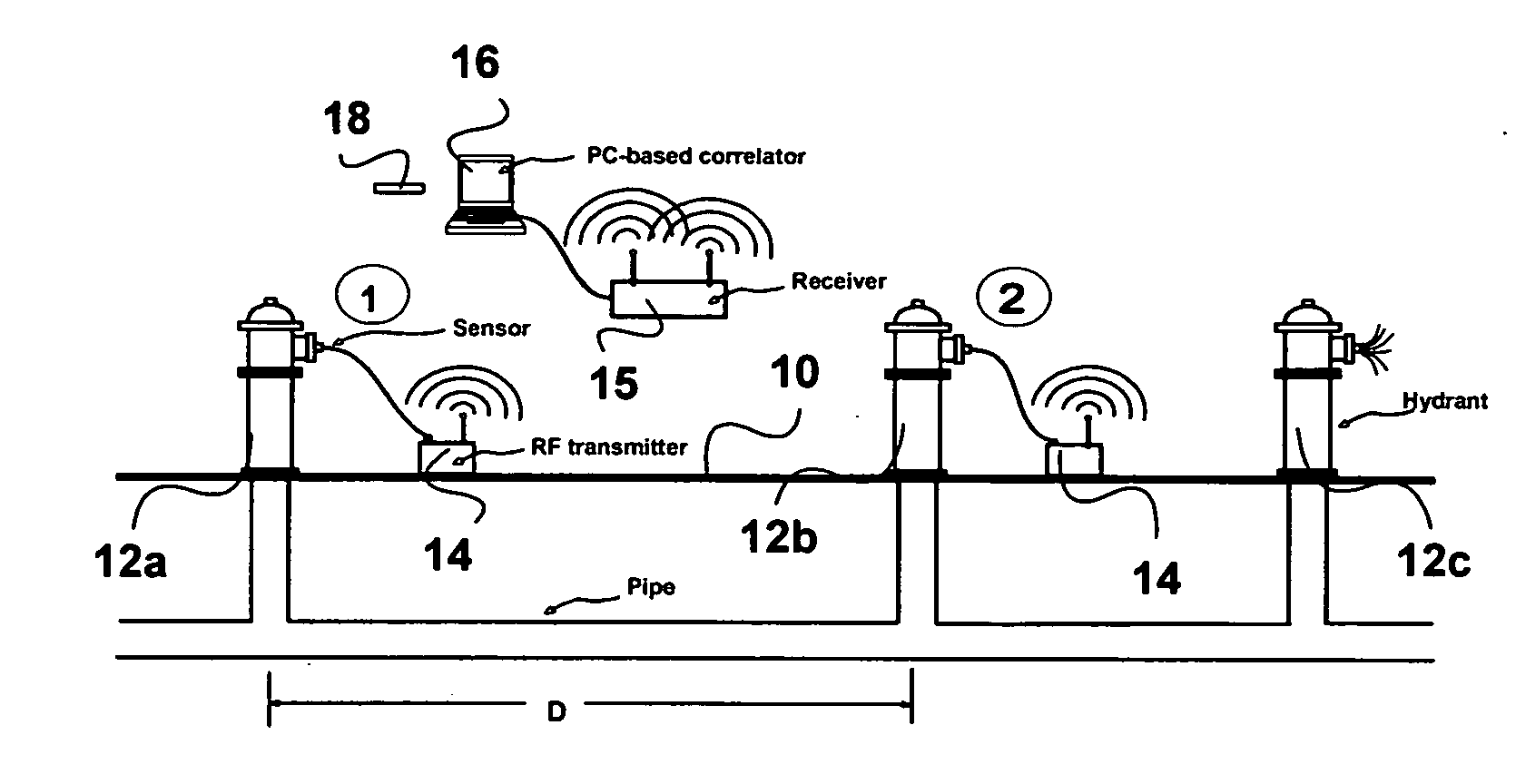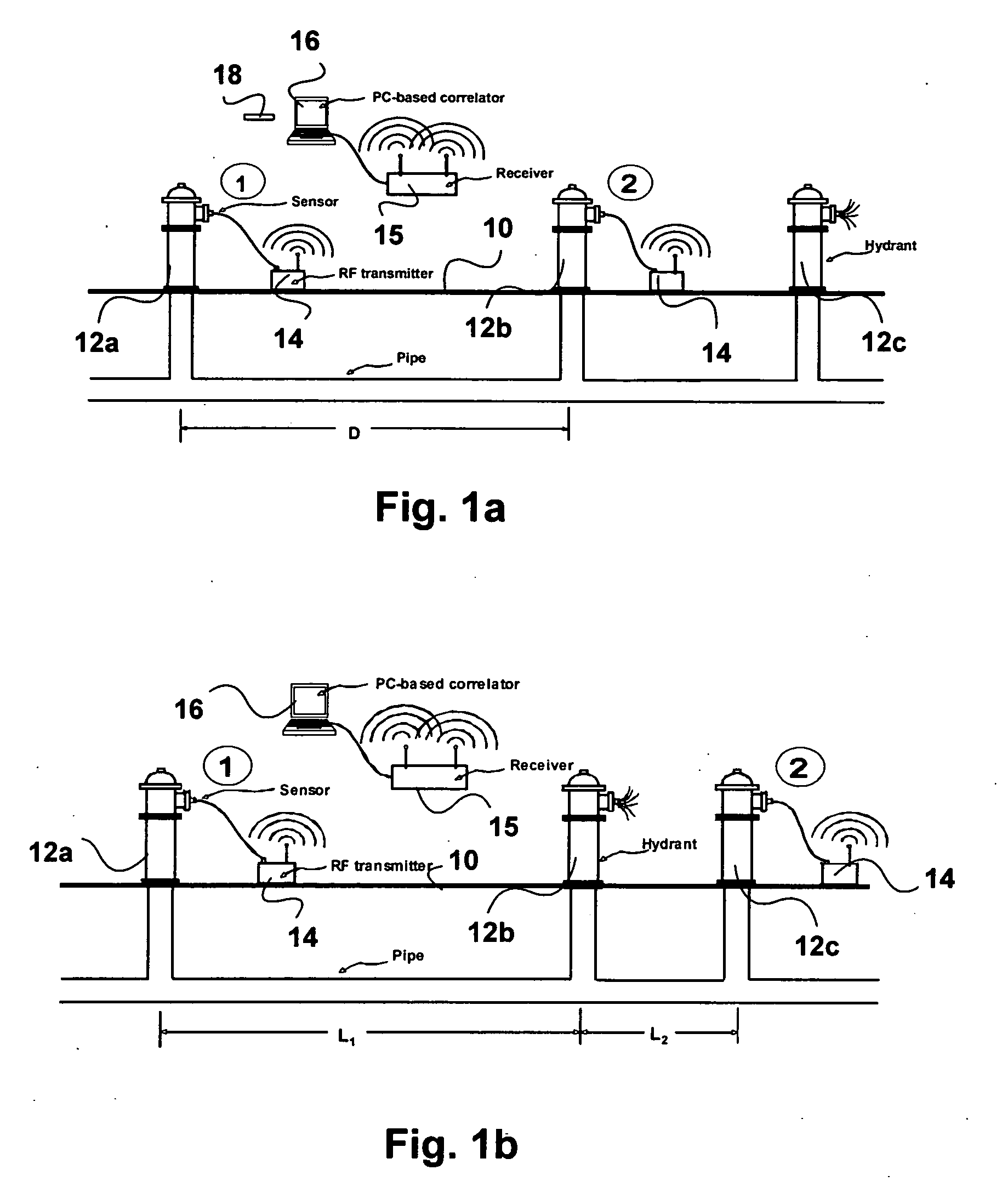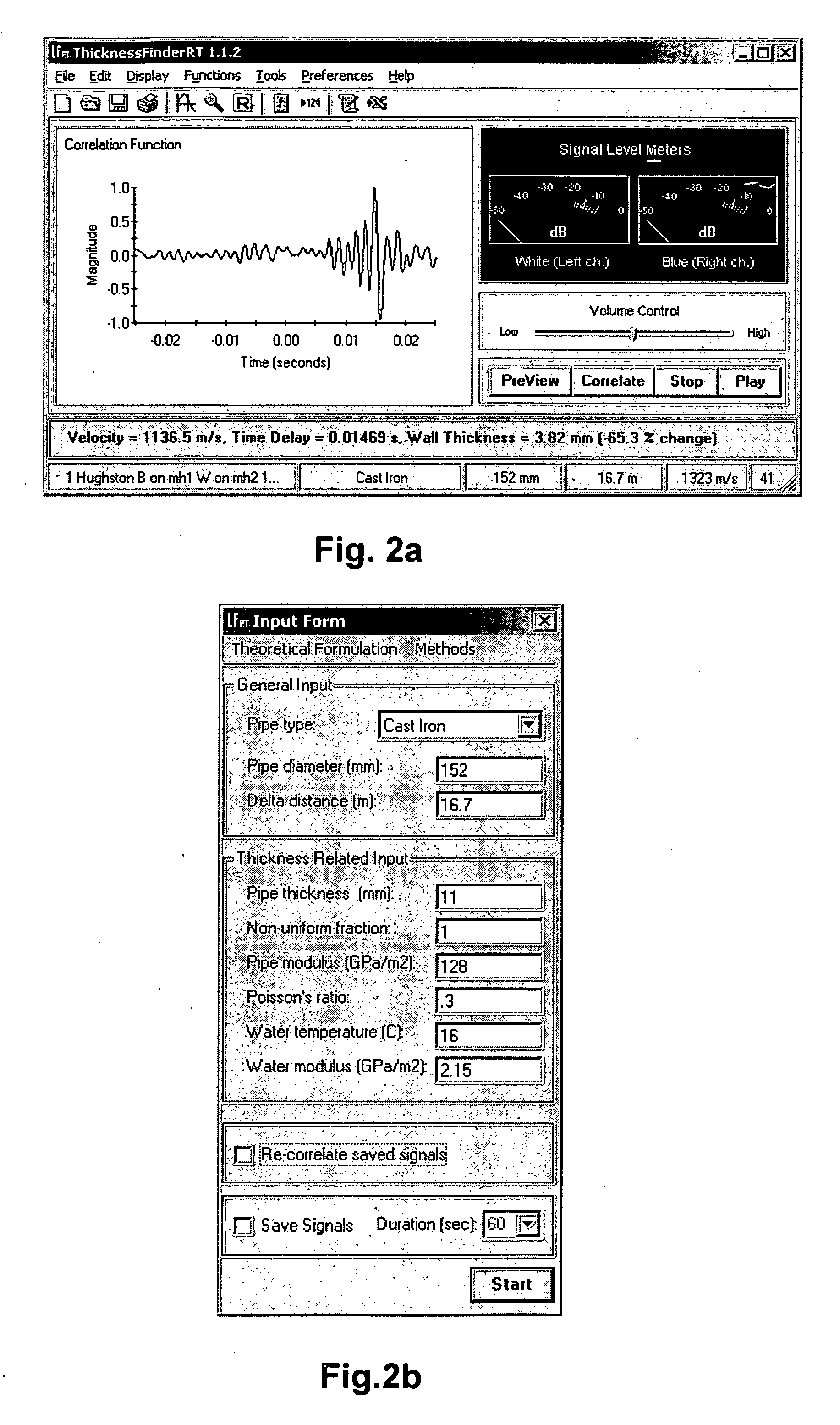Non-destructive testing of pipes
a condition assessment and non-destructive technology, applied in the direction of instruments, heat measurement, specific gravity measurement, etc., can solve the problems of pipe failure, pipe wall thickness reduction, and high cost of pipe excavating for the purpose of measuring wall thickness, so as to achieve easy implementation and easy measurement and calculation of pipe wall thickness
- Summary
- Abstract
- Description
- Claims
- Application Information
AI Technical Summary
Benefits of technology
Problems solved by technology
Method used
Image
Examples
Embodiment Construction
[0018] In order to assist in understanding the invention, it is helpful to consider the underlying theory.
[0019] The propagation velocity of acoustic waves in an unbounded fluid body is defined by the following equation: vo=γ K / ρ(1)
where K is the bulk modulus of elasticity of the fluid, ρ is its density, and γ is the ratio of the specific heats of the fluid (i.e., the ratio of the fluid's heat capacity in a constant pressure process to the heat capacity in a constant volume process).
[0020] The derivation of this equation can be found in Pearsall, I. S. “The velocity of water hammer waves”, Proceedings of the Institution of Mechanical Engineers, Vol. 180, Part 3E, pp. 12-20, 1965, the contents of which are herein incorporated by reference.
[0021] For a nearly incompressible liquid, which is the case under normal temperatures and pressures in water distribution pipes, γ is approximately equal to unity. Then, Eq. (1) becomes: vo=K / ρ(2)
[0022] The elasticity of the wall of a press...
PUM
 Login to View More
Login to View More Abstract
Description
Claims
Application Information
 Login to View More
Login to View More - R&D
- Intellectual Property
- Life Sciences
- Materials
- Tech Scout
- Unparalleled Data Quality
- Higher Quality Content
- 60% Fewer Hallucinations
Browse by: Latest US Patents, China's latest patents, Technical Efficacy Thesaurus, Application Domain, Technology Topic, Popular Technical Reports.
© 2025 PatSnap. All rights reserved.Legal|Privacy policy|Modern Slavery Act Transparency Statement|Sitemap|About US| Contact US: help@patsnap.com



